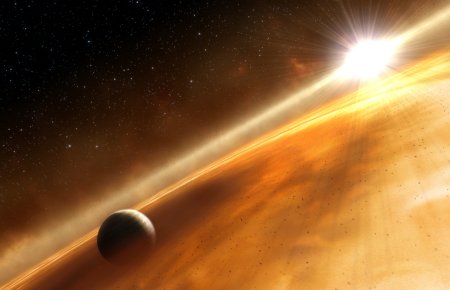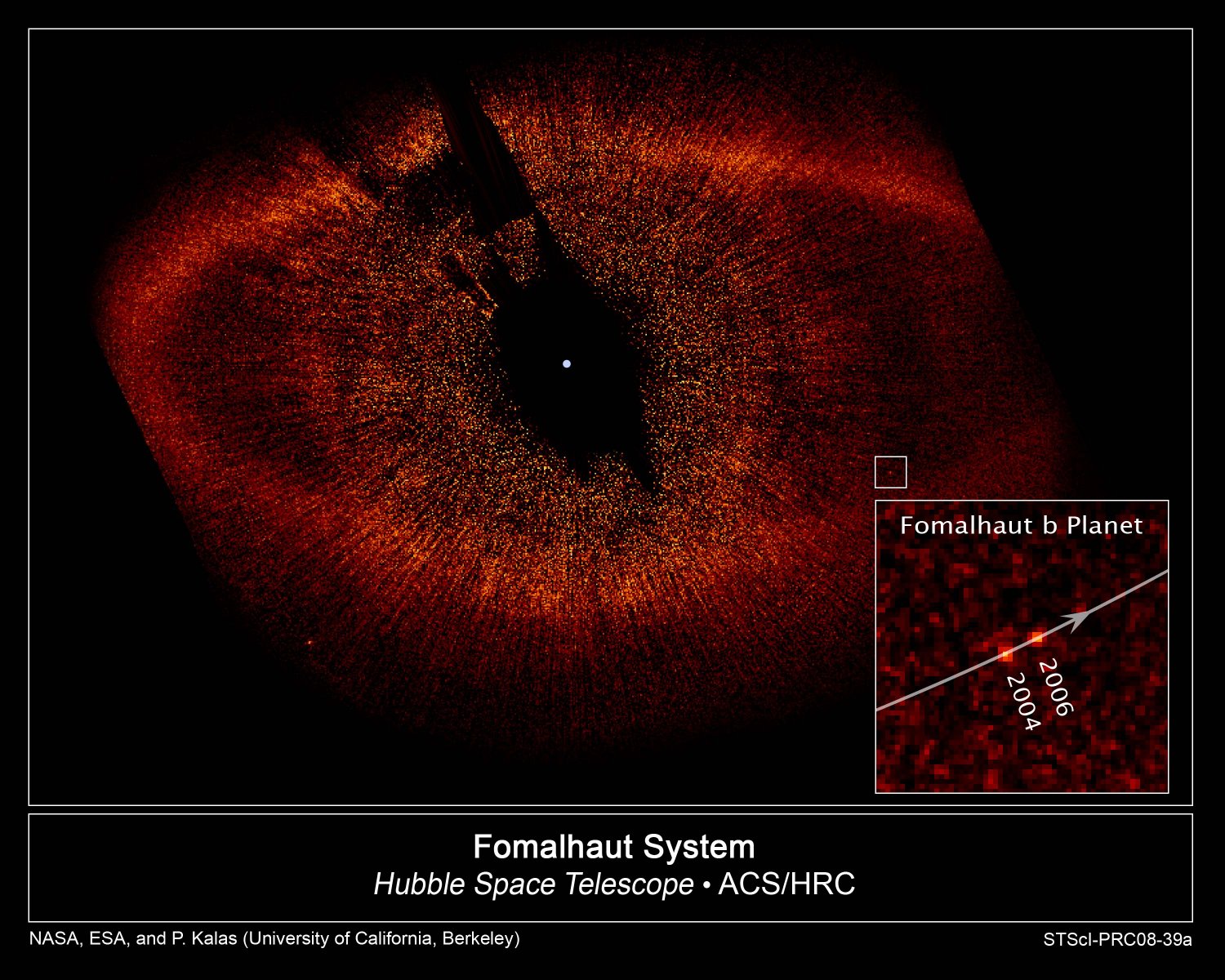So far, the photos have been obtained by indirect means or by photography at infrared frequencies

The Hubble Space Telescope took the first visible light image of a planet orbiting another sun. It is estimated that this is a star whose mass is no more than three Jupiter masses. This planet, known as Fomalhaut b, orbits the bright southern star Fomalhaut, which lies 25 light-years from Earth in the southern constellation of Pisces. This is at the same time as the announcement about Solar system photography And in it three planets are observing in Hawaii.
Formholt has always been in the sights of planet hunters since a large amount of dust was discovered near it, indicating planets in the process of formation. The dust disk was discovered in the early XNUMXs by NASA's infrared IRAS astronomy satellite.
In 2004, NASA made an observation of the star and its surroundings using the coronagraph of the Hubble Advanced Survey Camera, which for the first time recorded this region in visible light (a coronagraph is a device that blocks the bright light of a star to reveal the hollow objects next to it), then a ring of fragments was clearly visible -Planetary with a diameter of about 40 million km and has a sharp inner edge. This debris disk is similar to the kipper belt in the solar system that surrounds the sun and contains a wide variety of icy bodies, from dust grains to dwarf planets such as Pluto.
Astronomer Paul Callas from the University of California, Berkeley, and a team he led hypothesized in 2005 that the exact shape of the ring is maintained by "shepherds" - planets located between the star and the inner edge of the ring. Hubble has now managed to photograph a point of light located at a distance of about 3 billion km inside the inner edge of the ring. The results of the study were reported in the November 14 issue of the journal Science.
"It was necessary to photograph the system using the Hubble Space Telescope. Formalhot b is a billion times fainter than the star. We started this program back in 2001, and patience definitely paid off," said Kalas.
The series of observations, apart from those made with Hubble's coronagraph, lasted 21 months, and showed that the object moves in orbit around the star, and is therefore gravitationally bound to it. The object is 17 billion km from the Sun, or 10 times the distance between Saturn and our Sun.
However, the planet is much brighter than it should be for an object with a mass 3 times that of Jupiter. One possibility is that it has a ring of ice and dust like Saturn that reflects the light, where the material will eventually crystallize and become moons. The diameter of the ring is estimated to be similar to the distance between Jupiter and its four largest moons.

Callas and his team first used Hubble to image Formholt with the coronagraph in 2004 and then unexpectedly discovered the dust disk. At that time they also noticed the bright spot which they suspected was a planet. Another photograph in 2006 showed that one of the objects had changed position since the 2004 exposure. The distance traveled by the object is calculated, and from this it appears that its orbit around its sun is 872 years long, according to Kepler's laws.
In the future, the researchers intend to photograph the planet by observing in infra-red light and will look for signs of water vapor in the atmosphere, as well as collect additional data to more accurately calculate the mass of the planet.
The James Webb Space Telescope, Hubble's successor to be launched in 2013, will be able to make observations of Formholt using a coronagraph in the near and mid-infrared frequencies. Webb will be able to search for other planets in the system and monitor, for example, an asteroid belt in an inner orbit to the current ring.
It should be noted that already in 2005 photographed A body suspected to be a planet orbiting another sun, but apparently its mass is like a brown dwarf and not as small as a planet.

4 תגובות
For Albert, it is difficult to cope with the rate at which the vanity industry invents new nonsense and strongly demands that the scientists accept it and give their creations a scientific explanation.
However, since the topic of 2012 is in the headlines, and my content partner Universe Today has devoted an entire series to it, I might be able to translate another chapter from it. Can't guarantee right now when.
Hello my father!
Could you elaborate and explain about the star "Nabiru" that should appear with us in 2012, I read all kinds of articles about a star that will cause upheavals in the earth's weather.
Is the appearance of "Nabiru" real? Or are they just spreading rumors?
Thanks in advance
Albert Ohion from Tel Aviv.
You are apparently right, responder
From the NASA news site:-
It clearly showed a ring of protoplanetary debris approximately 21.5 billion miles across and having a sharp inner edge.
Sabdarmish Yehuda
40 billion km, probably